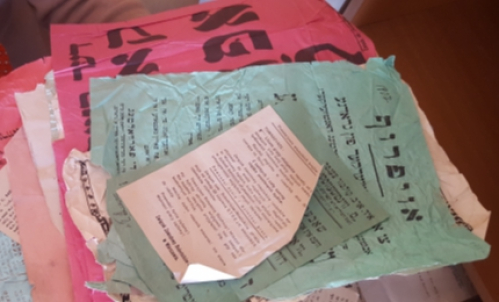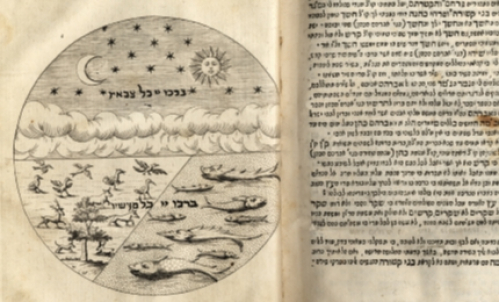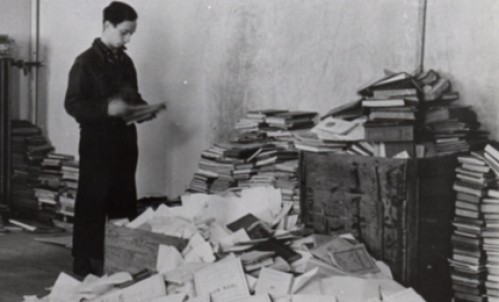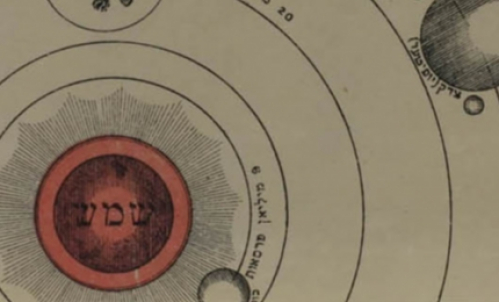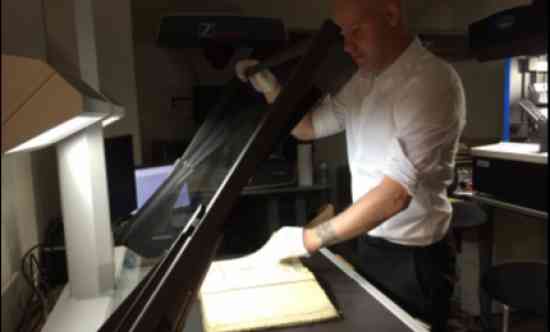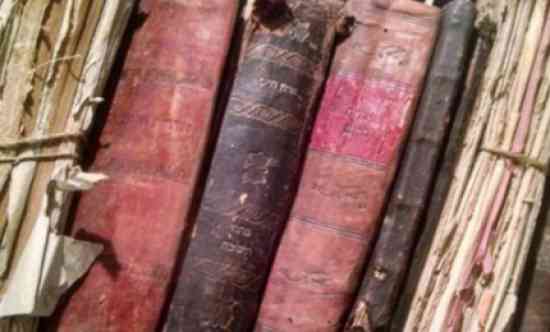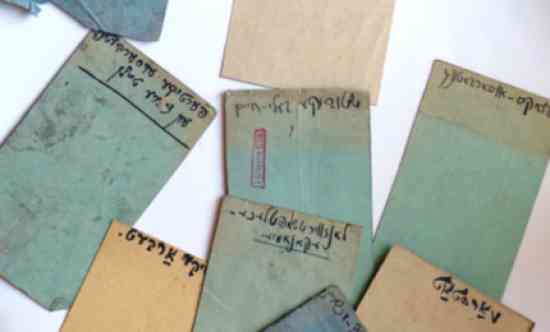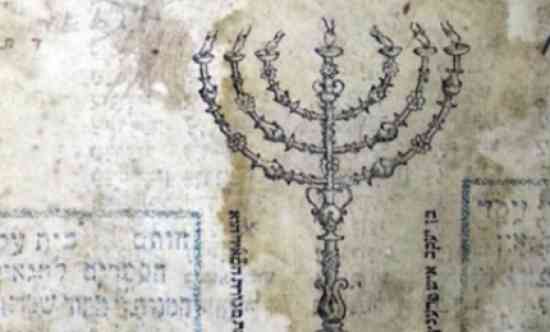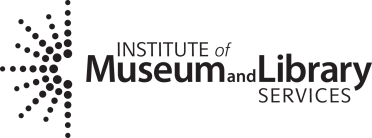The collection comprises a portion of the records of the Jewish community of Krotoszyn, which today is in the Greater Poland Voivodeship, Poland. The records are dated 1828 to 1919. During this period the town was located in the Posen (Poznań) region of Prussia and, after 1871, of the German Empire, and was generally known by the German name "Krotoschin." Originally Polish, the town had been annexed by Prussia in 1793, in the Second Partition of Poland. In 1919, following the First World War, it was incorporated into the Second Republic of Poland. Only a small Jewish community remained in Krotoszyn during the interwar period. The records are almost entirely those of the Jewish communal administration, or council, of Krotoschin, with just three files of a somewhat different provenance, two pertaining to voluntary associations of the community (Folders 29 and 35 ), and another containing official correspondence kept by the teacher of the Jewish elementary school ( Folder 38 ).
Approximately 40% of the collection comprises property and financial records ( Series I ), including correspondence with the government, with community members, and internally between the community executive and the representatives' assembly; and documents such as tax lists, insurance policies, plans/drawings of property, a debt repayment plan, and mortgage records. One volume in this series contains the oldest records in the collection, dated 1828 to 1830, related to assessing damage and negotiating compensation in the wake of the town fire of 1827 ( Folder 1 ). Aside from a single volume of supporting financial documents, for income and expenses in the year 1835 ( Folder 3 ), the collection lacks any formal financial accounts.
Another 40% of the collection comprises files of communal meeting minutes, and related correspondence, covering a variety of administrative as well as financial topics, along with meeting notices, announcements, and other ephemera ( Series II ). These records, spanning the period from 1834 to 1919, with gaps, include a file on communal elections of 1834 to 1872 ( Folder 15 ); correspondence files pertaining to marriages, 1834-1841 ( Folder 24 ), and requests for death certificates, 1834-1858 ( Folder 25 ); and employment-related records pertaining to the position of rabbi, in 1895 ( Folder 20 ), cantor/shochet, in 1904-1910 ( Folder 21 ), and cemetery attendant, 1873-1913 ( Folder 22 ).
The remainder of the collection pertains to charitable activities and, to a small extent, education ( Series III ). The former encompasses aid to community members as well as contributions to outside Jewish causes. Included are records related to distributions the community received from the bequest of Michael S. Freyhan, Breslau ( Folder 30-31 ); contracts for distribution of flour and matzot to the poor at Passover time ( Folder 32 ); participation in campaigns to aid Russian Jews, as well as combat anti-Semitism (1891-1905; Folders 33-34 , including appeals from the Deutsches Central-Komitee für die russischen Juden); and appeals from a variety of other Jewish institutions and organizations ( Folder 36 ), as well as a few Jewish communities. A small amount of material is included from two voluntary associations, one to clothe schoolchildren, 1834-1836 ( Folder 29 ) and the other to provide charitable support to Jewish travelers around the turn of the 20th century ( Folder 35 ). Series I also includes documentation of the Raschi Verein of Krotoszyn ( Folder 1 ).
The small amount of correspondence with the Deutsch-Israelitische Gemeindebund ( Folder 36 ) pertains not only to the latter's charitable work but also to the Krotoschin community's sending its archival records to Berlin, for inclusion in what became the Gesamtarchiv der Deutschen Juden.
Over 95% of the materials by extent comprise bound volumes of records, as they were prepared in the community, usually with their original covers intact, and, in most instances, formally inscribed with titles. In the inventory list below, the folder titles are taken from the original German titles, and an English-language title is given on the following line. On the covers of the volumes, the title (subject line) of the file is typically preceded by the phrase: "Acta israelitischen Korporation zu Krotoschin betreffend…" (Records of the Jewish community of Krotoschin, concerning…), or, in the case of volumes dating from the 1890s and later, the phrase: "Acta des Vorstandes der Synagogen-Gemeinde Krotoschin" (Records of the executive of the Jewish community of Krotoschin). In a few instances, volumes bear only an informal title indicating the topic. A small amount of the materials arrived in the form of loose documents, without any original folders. Those files, therefore, have no German title but only a supplied title in English. Folders containing loose documents are specified as such in the folder description. For the smaller bound volumes of up to 50 leaves, a leaf count is provided.
Krotoszyn (German: Krotoschin) is a town in west-central Poland, today in the Greater Poland Voivodeship. It lies some 30 km. west of Ostrów Wielkopolski, and 140 km. west of Łódź. The Jewish community in Krotoszyn dates from at least the 1420s, based on evidence that the community owed a debt to the Catholic Church of Czylez in 1423. The Polish king had granted town privileges to the locality in 1415. Documentation of the Jewish community's original charter (Privileg), dates from 1638, when the owners of the town reissued it; the charter was also ratified and extended in 1648 and in 1673.
In 1656, during the Polish-Swedish wars, the Jewish community was decimated by the Polish troops of Stefan Czarniecki. Of the 400 Jewish families then residing in the town, only 50 families survived. The community later revived, and played an important role in the Polish-Jewish governing body known as the Council of the Four Lands (circa 1580-1764).
The community had its own cemetery since at least the 17th century and perhaps earlier. Until the early 18th century, the Jewish cemetery in Krotoszyn served nearby localities including Leszno, Kobylin, Kępno, Zduny, Ostrów Wielkopolski, and, especially, Wrocław (Breslau), until 1761, when the Breslau community established a new cemetery.
During the 18th century, wealthy Jews of Krotoszyn carried on trade with the German lands, and attended the fairs in Breslau, Leipzig, and Frankfurt an der Oder. Community statutes were formulated in 1728 under a decree of the provincial governor Stanisław Potocki (d. 1760).
In 1774 a fire that affected half the town completely destroyed the Jewish quarter, including the synagogue, which had stood since the previous century. Nearly all of the community's records were also lost to the fire, so that documentation of the earlier history is scant. The synagogue was rebuilt but burned again in another town fire in 1827. The construction of a new synagogue was not undertaken until 1843-1846. In the intervening years services were held in the ten prayer houses. The new synagogue was dedicated in September 1846 by Rabbi Julius Gebhardt; it was a massive building, among the largest in Posen province.
Krotoszyn—in German "Krotoschin"—was located in territory annexed by the kingdom of Prussia in the Second Partition of Poland, in 1793, becoming the seat of the county (Kreis) of the same name, in the Prussian province of South Prussia. In 1807, following Prussia's defeat in the Napoleonic wars, South Prussia was part of the territory that Prussia ceded to France under the Treaty of Tilsit, and which became part of the quasi-independent Duchy of Warsaw. A few years later, following Napoleon's defeat, most of what had been South Prussia, including Krotoschin county, reverted to Prussia, under the settlement reached at the Congress of Vienna, in 1815, becoming part of the newly constituted Grand Duchy of Posen. After the adoption of the Prussian constitution of 1848/1850 the duchy became known as the Province of Posen.
In 1793 there were 1,384 Jews in Krotoschin, comprising approximately 37% of the town's total population (3,692). Based on death statistics, there were likely well over 1,800 Jews in Krotoszyn in 1828, and there were approximately 2,200 by 1837. The size of the Jewish community peaked in around 1849, when there were 2,327 Jews in the town, making up approximately 30% of the total population.
By profession, community members were mostly engaged in retail trade and handicrafts, with tailors, furriers, glove makers, and lace makers well represented.
Krotoschin was a notable center of Jewish learning and scholarship. Prominent scholars active there who also served as rabbis of the community included, in the 17th century, Menahem Mendel ben Meshullam Auerbach (served in Krotoschin from 1673 until his death in 1689); in the 18th century, Menachem Mendel ben Moses Auerbach (served 1732-1755; d. 1760), and Benjamin Katzenellenbogen (served 1774-1792); and, in the 19th century, David Joel and Eduard Baneth.
The community was also a center of Hebrew publishing, beginning in the mid 18th century. A well known printer and publisher of Krotoschin was B. L. (Baer Loeb) Monasch (d. 1876). His company, founded in the early 1830s, also brought out works in German, and remained in existence through 1901.
A Jewish elementary school, recognized by the government, was established in 1850, in its own building, through the efforts of the Verein zur Wahrung jüdischer Interessen (Society for the protection of Jewish interests); in 1860 approximately 500 students attended the school. Later on, a school devoted to Hebrew and religious instruction was established.
The Krotoschin synagogue underwent a major renovation in 1894, and an organ was installed.
In the second half of the 19th century, the community steadily declined in size, mostly due to members moving away to larger German cities. The community numbered 2,098 in 1857; 1,149 in 1871; and 670 in 1900. In 1907, there were 527 Jews in the town, making up approximately 3% of the total population.
In spring 1919, pursuant to the treaties following the First World War, Krotoschin became part of the Second Polish Republic. Many Jews as well as non-Jewish Germans moved away at that point. In 1925 the Jewish community numbered approximately 120 members, or 1% of the town population. In 1939, only 50 Jews remained; and there may have been under 20 by the time of the Nazi invasion in September 1939, marking the outbreak of the Second World War. Under Nazi administration, the Posen province became part of Reichsgau Wartheland. The small number of Jews remaining in the town were deported to the Łłódź ghetto by early 1940.
Rabbis, community leaders, and other prominent figures in the 19th to 20th century
Following are rabbis who served the Krotoschin community, with approximate years of service:
Herschel Cohen (or: Hirsch Kohen; son of Raphael Cohen, Hamburg), circa 1803 until his death in December 1827
Beer Lichtenstädt (also known as "Lichtenstein"), 1828 until his death in April 1837
Löbel Goldschmidt (dayan), 1825 until his death in May 1832
Samuel Mendelssohn (dayan), 1828 until his death in April 1866
Israel Goldschmidt (dayan), 1852—circa 1858
David Joel, December 1859—early 1880
Eduard Baneth, 1882-1895
Heinrich Berger, 1896-1912
Gustav Cohn, 1912-1920
Following, with approximate years of service (gleaned, as best as possible, from the files in the present collection), are community members who served as chair (Vorsteher) of the community executive (Vorstand) from the early 19th century through the First World War:
Salomon Krüger, circa 1828
Michael Rosenstein, 1834-1850
Joseph Israel Goldschmidt, 1850-1855
Auerbach and/or Herzsohn, circa 1857-1866
Louis Bendix, 1867-1872
Meyer Katzenellenbogen, 1872-1874, 1881
Joel Auerbach, 1875-1876
Louis Cohn, circa 1879
Marcus Levy, Moritz Prinz, and/or K.[?] Grünspach, circa 1885-1887
Marcus Levy, circa 1887-1889, 1900-1902
Adolf Katzenellenbogen, 1891-1893
Emil Cohn, 1894-1896, 1900-1902
A. Grünspach, 1903-1907
Otto Hepner, 1907
Julius Neumark, 1908 until his death in April 1913
Louis Daniel, circa 1915
and those who served as chair of the representatives' assembly:
Israel Abraham Goldschmidt, 1834-1837, 1840-1843
H. Alba, 1837-1840
A. Sochaczewski, 1843-1845
H. Karo, circa late 1840s
Louis Cohn, circa 1855-1857
Joseph Israel Goldschmidt, 1863-1868
S. H. Eppenstein, 1869-1872
Louis Dienemann, 1872-1876, circa 1881, 1886-1889
M. Auerbach, circa 1891, 1900, 1905
Simon Lewy/Levy, circa 1906, 1910
Louis Sklarek, circa 1910
Manheim, circa 1911
Heimann Daniel, 1911-1915
Other prominent Jews of Krotoschin not already mentioned included Rabbis Abraham Meyer Goldschmidt (d. 1889), Isidor Kalisch (d. 1886), Aron Pulvermacher, Simon Eppenstein (d. 1920), and Max Dienemann (d. 1939); teachers Hermann Warschauer (d. 1880) and Albert Herbst (d. 1907); historian Bruno Gebhardt (d. 1905); scholar Georg Huth (d. 1906); and the feminist and educator Henriette Goldschmidt (née Benas, d. 1920; wife of Rabbi Abraham Goldschmidt).
Postscript
No Jewish community was ever re-established in Krotoszyn in the post-World War II period. The Krotoszyn synagogue, located on Potter's Square (Garncarskiej plac), was destroyed during the Nazi occupation, circa 1940-1941. The site was apparently razed after the war, leaving an empty square; the property was returned to the Wrocław (Breslau) Jewish community sometime after 1989, and in 2016 was sold to a private party. The Jewish cemetery, located on ulica (street) Ostrowskiej between the streets Głowackiego and Sosnową, was also desecrated during the Nazi period; the gravestones were removed and used for building blocks in various places in the city. One surviving intact gravestone was transferred to Krotoszyn's Regional Museum in 1975. In 2005, a wall that was built on the grounds of St. Roch Catholic church was partially dismantled, and gravestone fragments from there as well as elsewhere in the city were recovered; the same year the chief rabbi of Poland, Michael Schudrich, gave permission for the construction of a lapidarium. Under a 2010 agreement between the town and the Union of Jewish Religious Communities in Poland (ZGWŻ), the site of the former Jewish cemetery is partially used for residential buildings, with two thirds remaining as greenery.
References
Alicke, Klaus-Dieter (2008). Lexikon der jüdischen Gemeinden im deutschen Sprachraum. 3 vols. Güterloh: Güterloher Verlagshaus. Vol. 2. "Krotoschin (Posen)." Available online at: www.jüdische-gemeinden.de
Berger, Heinrich (1907). "Zur Geschichte der Juden in Krotoschin." Monatsschrift für Geschichte und Wissenschaft des Judentums. Issue 3, p. 359-380. Available online, in the Compact Memory collection, Goethe University, Frankfurt am Main.
Heppner, Aaron, and Isaak Herzberg (1909). Aus Vergangenheit und Gegenwart der Juden und der jüd[ischen] Gemeinden in den Posener Landen. Koschmin and Bromberg. Vol. II, issue 15. "Krotoschin," p. 561-583. Available online, in the Aron Freimann collection, Goethe University, Frankfurt am Main.
International Association of Jewish Genealogical Societies (IAJGS). "Krotoszyn." International Jewish Cemetery Project.
Kirshenboim, Shimshon Leib, and Danuta Dombrowska (2007). "Krotoszyn." Michael Berenbaum and Fred Skolnik (Eds.), Encyclopaedia Judaica. 2nd ed. Detroit: Macmillan Reference USA. Vol. 12, p. 373-374.
Virtual Shtetl. "Krotoszyn" (in Polish, with some parts available in English translation). Originally a project of the Association of the Jewish Historical Institute of Poland, since 2012 the Virtual Shtetl website, www.sztetl.org.pl, is sponsored by the POLIN Museum of the History of Polish Jews.
The great majority of the materials are volumes of records that were bound and titled in the community. In addition, many of the volumes have on the front cover what is apparently a location designation, usually indicating a shelf or compartment, and position number (e.g. "Fach 4, No. 1")—a labeling system that was applied in the community, likely reflecting how the volumes were stored. Those designations, when present, are included here in parentheses following the original German title. (A few volumes do not have such a designation, and a small amount of material arrived as loose documents, with no original folders.) The sequence of the volumes according to these location designations has large gaps and does not in and of itself reflect any consistent intellectual arrangement. During the present processing, therefore, the volumes have been grouped into the present three series, representing broad categories of records, in order to facilitate an overview. Care was taken to keep related volumes together, based on content (and as sometimes reflected in similar location designations).
The collection is arranged in the following series:
The great majority of the materials are volumes of records that were bound and titled in the community. In addition, many of the volumes have on the front cover what is apparently a location designation, usually indicating a shelf or compartment, and position number (e.g. "Fach 4, No. 1")—a labeling system that was applied in the community, likely reflecting how the volumes were stored. Those designations, when present, are included here in parentheses following the original German title. (A few volumes do not have such a designation, and a small amount of material arrived as loose documents, with no original folders.) The sequence of the volumes according to these location designations has large gaps and does not in and of itself reflect any consistent intellectual arrangement. During the present processing, therefore, the volumes have been grouped into the present three series, representing broad categories of records, in order to facilitate an overview. Care was taken to keep related volumes together, based on content (and as sometimes reflected in similar location designations).
The collection is arranged in the following series:
Series I: Property and financial records , 1828-1913
This series contains records related to community property and finances, comprising only a scattered selection of such records. Three files pertain to property: Folder 1 relates to property matters in the wake of the town fire of 1827, as well as the community's negotiations with the Raschi Verein in the early 20th century (with inclusion of the organization's constitution of 1900); Folder 12 concerns insurance policies, from the mid 19th century to 1905, with inventories; and Folder 13 consists of an architectural drawing related to a planned renovation of the Jewish elementary school in 1913.
The remaining files in the series are financial records, dating from 1834 to 1870. These include two files related to a community commission that oversaw repayment of the communal debt, beginning in the 1830s ( Folders 4-5 ). Three files pertain to communal tax contributions ( Folders 9-11 ), including tax lists in the period 1835 to 1837 ( Folder 9 ), and petitions/complaints from community members about their tax assessments in the 1860s ( Folder 11 ); and one specifically concerning the military recruitment tax, in 1834-1835 ( Folder 2 ). The latter tax was levied on the community in light of Jews' exemption from military service, and particular families who had sons serving could gain an exemption from it; the tax was eliminated in Posen around 1846 as a result of a change in the law that made military service compulsory for Jews, the same as for the general population (which had already been the case in the rest of Prussia earlier on).
The series does not include any of the formal financial statements that the community would have submitted annually to the government, but there is one volume containing the supporting documents for the year 1835 ( Folder 3 ). Finally, there are two files concerning court cases over financial disputes ( Folders 6-7 ), and another containing a legal opinion related to the calculation of the subsidy for the Jewish elementary school ( Folder 8 ).
Related materials elsewhere in the collection include: in Series II, general correspondence pertaining in part to financial matters ( Folders 16-18 ), and employees' contracts and related correspondence ( Folder 22 ). Records specifically concerning charitable activities, or dues or contributions to national Jewish organizations are found in Series III .
Folder 1: Fleischerschul (Fach 4, No. 1) Property matters pertaining to the Fleischerschul (Jewish butchers' association and their temple), later called the Raschi Verein; and older files on compensation and rebuilding following town fire of 1827 , 1828-1830, 1908-1910
Some 30 leaves at the back of the volume, dated 1908-1910, concern property issues related to the Raschi Verein, originally called the Fleischershul(e), a Jewish butchers' trade association (also "jüdische Fleischerzunft") that from before 1822 had maintained its own temple and the property where it was located; the remainder of the file (more than two thirds of it) comprises older materials, dated 1828-1830, concerning assessment of damage and plans for rebuilding communal buildings and houses, following the town fire of 1827. Includes, in the earlier period: correspondence with the government; petitions from the community; government invoices/receipts; cost estimates for building projects; report about community and private properties affected by the fire, with drawing/plan of community buildings and houses, and list of communally held plots of land; list of private house owners with attestations as to plans for rebuilding. Two letters to the community are in Yiddish, with postal receipt for item addressed to Abraham Eiger, Rawicz. In the later period: correspondence with attorney; minutes of meeting of the executives of the community and the Raschi-Verein, concerning an agreement about daily synagogue services acceptable to the Verein, which would then relinquish its property to the community; letter of community executive to the representatives; meeting notices, including one of the Raschi-Verein with list of members; minutes/decisions of the community council and of the Raschi-Verein, including letter from the Verein with copy of constitution of 1900; and attorney's report on the history of the Fleischerschule property.
The file title "Akta Fleischerschul" is informally written on the front cover, apparently dating from the later period, while an inside title page pertaining to the older materials reads "Acta betreffend der von den Synagogen Brandstellen von den königl. Conducteur zu entschädigen Verwaltungs Gelder, so wie den Correspondans deren Bauangelegenheiten" (files on matters of compensatory monies for the community from the government assessor for property damaged by the town fire, as well as correspondence about related construction matters).
Folder 2: Die Recrutensteuer (Fach 5?; No. 1, Litt. A) Recruitment tax , 1834-1835
Folder 3: Belege über Einnahme und Ausgabe der israelitischen Corporations-Casse zu Krotoszyn pro 1835 Accounts of the Jewish Community of Krotoschin treasury for 1835: Supporting documents for income and expenses , 1835
Folder 4: Schulden Tilgungs Commission ... betreffend die Hypotheken-Sache von dem Grundstücke sub No. 138 (Fach 23 / R. N. 4) Debt repayment commission, concerning the mortgage on property No. 138; new mortgage; sale of property , 1836, 1841-1847, 1854-1864
Folder 5: Plan zur Tilgung der Schulden der Israelitischen Corporation zu Krotoschin Debt repayment plan of the Jewish Community of Krotoschin , 1839 October 20
Folder 6: Die Process-Sache der Krankenverpflegungsanstalt zu Breslau contra die Corporation (Fach 28 / R. N. 4, Lit. P) Court case: Krankenverpflegungsanstalt zu Breslau v. Krotoschin Jewish community , 1837-1840
Folder 7: Justiz-Kommissarius Kubale Court case: Jewish community of Krotoschin vs. Isaac Schück , 1850-1853
Folder 8: Gutachten Attorney's legal opinion , 1859 March 23
Folder 9: Die Repartition der aufzubringenden Comunal Beiträge (Fach 38, Litt. R, Nro. 2) Assessment of communal tax contributions , 1834-1837, 1852
Folder 10: Die Einziehung der Korporations-Beiträge (Fach 38, Nro. 3) Collection of community tax contributions from members and former members in arrears , 1858-1870
Folder 11: Präparations-Beschwerden wegen Korporationsbeiträge (Fach 39, Nro. 6) Petitions concerning community tax contributions , 1863-1869
Folder 12: Versicherungen (Fach 13, Nro. 12) Insurance , 1868-1905
Folder 13: Umbau der jüdischen Schule hierselbst Architectural drawings for renovation of the Jewish elementary school , 1913 March 30
Series II: General correspondence, minutes, and ephemera , 1831, 1834-1858, 1873-1919
This series contains correspondence and minutes of the Krotoschin Jewish Community council, as well as meeting notices and community announcements. Especially noteworthy are two correspondence files, concerning community members' marriages ( Folder 24 ), 1838-1841, and requests for death certificates, 1834-1858 ( Folder 25 ). Also, two files contain numerous employment applications, for the positions of rabbi, in 1895 ( Folder 20 ), and cantor/shochet ( Folder 21 ), in 1904-1910; and one contains employment applications, contracts and other materials related to the position of cemetery attendant, 1873-1913 ( Folder 22 ).
The remaining files, which pertain to a variety of administrative and financial matters, are concentrated in two disparate periods: on the one hand, the early 19th century, mainly 1834 to 1845 ( Folders 14-16 and 23 ), including one folder on community council elections (with several lists of eligible voters) that extends to as late as 1872 ( Folder 15 ); and, on the other hand, the early 20th century, mainly 1905 to 1915 ( Folders 17-19 ), with one file pertaining to Jewish soldiers (leave for Jewish holidays, oath taking) and patriotic occasions ( Folder 26 ) spanning the years 1891 to 1910.
Among the miscellaneous loose items at the end of the series ( Folders 27-28 ) is a fragment (first and last leaf) of a pamphlet printed by the well known local Jewish publishing firm B. L. Monasch & Co., dating from the 1890s ( Folder 28 ).
Folder 14: Die Einberufung der Repraesentanten (Fach 5; Litt. B, No. 15, Vol. II) Representatives' assembly meetings, administrative infractions , 1838-1845
Folder 15: Die Wahl der Repraesentanten und deren Anstellung (Fach 7, Litt. B, Nro. 1) Election and induction of community representatives , 1834-1872
Folder 16: Die Correspondenz der Repraesentanten (Fach 7, Litt. B, Nro. 2) Correspondence of the representatives , 1834-1842, 1845, 1849
Folder 17: Sitzungs Verhandlungen der Repräsentanten (Fach 7, Nro. 11) Minutes of the representatives, with related correspondence , 1905-1909
Folder 18: Sitzungs-Verhandlungen der Representanten (Fach 7) Minutes of the representatives, with related correspondence , 1910-1913
Folder 19: Curenden des Vorstandes und Representanten (Fach 7, No. 8) Meeting notices of the executive and representatives; announcements , 1910-1915
Folder 20: Bewerbungen um die vacante Rabbiner-Stelle (Fach 6, No. 1) Applications for vacant rabbi position , 1895
Folder 21: Bewerbungen der Cantor und Schächter, Religionslehrer-Stelle sowie Chorleiter Applications for cantor/shochet position, including duties of religion teacher and choir director , 1904, 1908, 1910
Folder 22: Anstellung des Friedhofs-Diener Jankowski (Fach 6, No. 8) Employment of cemetery attendant/gardener , 1873-1894, 1898-1904, 1911-1913
Folder 23: Miscellania (Fach 29, Litt. M, Nro. 1) General correspondence, announcements , 1831, 1834-1837
Folder 24: Die Heiraths-Sachen und die Nachsuchung resp. Ertheilung der Trauscheine (Fach 21, Nro. 3, Vol. III / R No. 2, Lit. H) Marriage banns, petitions to marry, and related matters , 1838-1841
Folder 25: Die Ertheilung der Todtenscheine und der Correspondence hierüber (Fach 36, Litt. S, Nro. 3) Death certificates and related correspondence , 1834-1848, 1850-1851, 1858
Folder 26: Militair-Angelegenheiten resp. Beurlaubung der jüdischen Soldaten zu den Feiertagen (Fach 1, Nro. 5) Correspondence with the military authorities concerning furlough for Jewish soldiers for their holidays, and other matters, including patriotic occasions , 1891-1910
Folder 27: Correspondence: Various , 1870, 1905, 1915-1919
Folder 28: Ephemera, miscellaneous , undated, 1892-1909
Series III: Charitable activities and education , 1828, 1834-1839, 1852-1913, 1919
This series contains mainly records pertaining to charitable activities of the community and its voluntary associations, including aid to community members and donations to external causes and organizations. At the end of the series is a small amount of material related to education, including items pertaining to the religious school, which gave instruction in Hebrew ( Folders 38-39 ); and a file of materials, evidently kept by teacher Margolius, concerning the Jewish elementary school ( Folder 40 ), in 1919, at the time that the town was being integrated into Poland after World War I.
Among the records on charitable aid, specific topics include the following: the activities of a community association dedicated to clothing poor, orphaned children, mainly in 1834-1836 ( Folder 29 ); the distribution of funds received by the community from the bequest of Michael Salomon Freyhan (1752-1826) of Breslau in the period from 1834 to 1839, and 1858 to 1899 ( Folders 30-31 ; the Freyhan bequest benefitted a total of five Jewish communities, the others being Gross-Glogau, Zülz, Lisse, and Kempen); contracts for the distribution of matzot to the poor and to Jewish soldiers, 1859-1874, as well as appeals concerning the feeding of Jewish prisoners ( Folder 32 ); aid to Russian Jews in the 1890s and 1905 ( Folder 33 ); and bylaws of a community charitable society for support of the poor, from around the turn of the 20th century ( Folder 35 ).
Finally, Folder 36 contains correspondence with a charitable commission of the Deutsch-Israelitischer Gemeindebund (DIGB), a federation of Jewish communities founded in 1869, as well as correspondence with various other Jewish charitable, religious, or cultural organizations, and several Jewish communities.
Among the correspondence with the DIGB, particularly notable are a few items, in June 1905, pertaining to a shipment of the community's archival records to the Gemeindebund's office in Berlin; those records became part of the Gesamtarchiv der deutschen Juden (Central archives of the German Jews), which was formally established in October of the same year. The Gesamtarchiv published an inventory of the Krotoszyn community records in 1910, in its newsletter, Mitteilungen des Gesamtarchivs der deutschen Juden, vol. 2, p. 29-36.
Files elsewhere in the collection related to charitable activities or education include: in Series I, an 1859 legal opinion concerning the calculation of the subsidy for the Jewish elementary school ( Folder 8 ); and, in Series II, petitions from community members in the 1830s, and a letter from the government, 1849, concerning the Jewish elementary school (both in Folder 16 ); and items concerning the feeding of poor Jewish soldiers in 1899 ( Folder 26 ).
Folder 29: Der Verein zur Bekleidung armer, elternloser Schulkinder (Fach 46, Litt. V, No. 1) Society to provide clothing for poor, orphaned schoolchildren , 1834-1836, 1852-1853
Folder 30: Das Freihan’sche Legat zu Breslau (Fach 27) Bequest of Michael Salomon Freyhan, Breslau , 1828, 1834-1839
Folder 31: Das Freyhansche Legat Bequest of Michael Salomon Freyhan, Breslau , 1858-1899
Folder 32: Anschaffung des Ostermehls (Fach 1, Nro. 9, Vol. III) Passover flour and matzot for distribution to the poor , 1859-1874
Folder 33: Die Unterstützung der russischen Juden (Fach 8, Nro. 2) Aid for Russian Jews, including correspondence with the Verein zur Abwehr des Antisemitismus and the Hilfsverein der deutschen Juden , 1891-1894, 1898, 1905
Folder 34: Aid to Russian Jews: Ephemera , 1891
Folder 35: Satzungen des Unterstützungs-Vereins für jüdische Arme in Krotoschin Bylaws of the Charitable Society for the Support of Poor Jews in Krotoschin , undated, 1901-1905
Folder 36: Deutsch-Israelitischer Gemeindebund: Kommission zur Erziehung der jüdischen Gebrechlichen, Blinde und Geistesschwache (Fach 18, No. 12) Correspondence with the Deutsch-Israelitischer Gemeindebund (DIGB), including its Commission for the Education of the Jewish Frail, Blind and Mentally Impaired; and other Jewish charitable organizations and petitioners , 1905-1912
Folder 37: Correspondence: Charitable aid , 1913, 1919
Folder 38: Religious school curriculum , circa 1882-1895
Folder 39: Religionsschule (Fach 13, No. 5) Religious school , 1900-1902
Folder 40: Jewish elementary school: Correspondence of teacher Margolius , 1919
Archival Reference Information
- German
- Hebrew
- Yiddish
- 1828-1919
- 1828-1919
- Neumark, Julius, -1913
- Rosenstein, Michael
- Krotoszyn (Województwo Wielkopolskie, Poland)
- Poznań (Poland : Voivodeship)
- Announcements
- Bylaws (administrative records)
- Contracts
- Correspondence
- Financial records
- Receipts (Financial Records)
- Insurance policies
- Invoices
- Marriage records
- Plans (orthographic projections)
- Printed ephemera
- Vital statistics records
- Deutsch-Israelitischer Gemeindebund (Germany)
- Krotoszyn Jewish Community Council
- Cantors (Judaism)
- Jewish life
- Jewish soldiers
- Krotoszyn (Województwo Wielkopolskie, Poland)
- Poznań (Poland : Voivodeship)
- Neumark, Julius, -1913
- Rosenstein, Michael
- Cantors (Judaism)
- Jewish life
- Jewish soldiers
- Jewish way of life
- Deutsch-Israelitischer Gemeindebund (Germany)
- Krotoszyn Jewish Community Council
- Announcements
- Bylaws (administrative records)
- Contracts
- Correspondence
- Financial records
- Receipts (Financial Records)
- Insurance policies
- Invoices
- Marriage records
- Plans (orthographic projections)
- Printed ephemera
- Vital statistics records
- Announcements
- Bylaws (administrative records)
- Cantors (Judaism)
- Deutsch-Israelitischer Gemeindebund (Germany)
- Contracts
- Correspondence
- Financial records
- Receipts (Financial Records)
- Goldschmidt (Family : Krotoszyn, Poland)
- Grünspach (Family : Krotoszyn, Poland)
- Insurance policies
- Invoices
- Jewish life
- Jewish soldiers
- Katzenellenbogen family
- Krotoszyn (Województwo Wielkopolskie, Poland)
- Krotoszyn Jewish Community Council
- Marriage records
- Neumark, Julius, -1913
- Plans (orthographic projections)
- Poznań (Poland : Voivodeship)
- Printed ephemera
- Rabbis
- Rosenstein, Michael
- Vital statistics records
Search in the "Krotoszyn Jewish Community Council" Archival Collection (RG 14)
Permission to publish part or parts of the collection must be obtained from the YIVO Archives. For more information, contact:
YIVO Institute for Jewish Research, Center for Jewish History, 15 West 16th Street, New York, NY 10011
email: archives@yivo.cjh.org
The images, documents, film footage, audio materials, and texts displayed in any portion of this web site may be copyrighted. Permission to use this web site is given on condition that the user agrees to follow U.S. copyright laws. The user agrees that she or he assumes liability for any copyright violations resulting from unauthorized use of items appearing on this web site and to hold YIVO harmless from any action involving copyright infringement. It is the responsibility of the user to carry out a due diligence search under U.S. c opyright laws to determine the copyright status of items displayed on this web site.
The materials on this web site may be used for personal, research and educational purposes only. Publication (including posting on the Internet and online exhibitions) or any other use without prior authorization is prohibited. To request permission for use of these materials, please apply in writing to: YIVO Archives, YIVO Institute for Jewish Research, 15 West 16th Street, New York, NY 10011, archives@yivo.cjh.org.
YIVO owns the compilation of content that is posted on this website, which consists of text, images, and/or audio, and video. However, YIVO does not necessarily own each component of the compilation. Some content is in the public domain and some content is protected by third party rights. It is the user's obligation to determine and satisfy copyright or other use restrictions when publishing or otherwise distributing materials found in YIVO websites.
The materials on this web site may be used for personal, research and educational purposes only. Publication (including posting on the Internet and online exhibitions) or any other use without prior authorization is prohibited. Please visit https://www.yivo.org/Rights-Reproductions for more information about use of materials from this website.
YIVO has employed due diligence in seeking to identify copyright holders of the materials in this compilation. We invite any copyright owners who are not properly identified to contact us at yivomail@yivo.cjh.org.
The Edward Blank YIVO Vilna Online Collections project is an international project to preserve, digitize, and virtually reunite YIVO’s prewar library and archival collections located in New York City and Vilnius, Lithuania, through a dedicated web portal. The project will also digitally reconstruct the historic, private Strashun Library of Vilna, one of the great prewar libraries of Europe.
This project is a partnership between the YIVO Institute for Jewish Research, the Lithuanian Central State Archives, the Martynas Mažvydas National Library of Lithuania, and the Wroblewski Library of the Lithuanian Academy of Sciences, and includes the cataloging, conservation, and digitization of documents and books in both New York and Vilnius.
In May 2017, some 170,000 pages of previously unknown documents, lost to history for almost 70 years, were discovered in Vilnius, significantly expanding the scope of our project.
Read the article in the New York Times Watch our press conference
Are you using Edward Blank YIVO Vilna Online Collections material for your project? If so, please feel free to share information about your project here.
